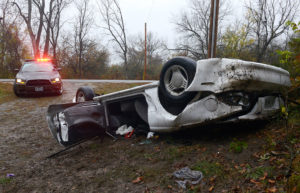Driving is an essential part of modern life. Whether we’re commuting to work, running errands, or taking a road trip, we rely on our cars to get us where we need to go. Unfortunately, driving can also be dangerous, with thousands of car accidents occurring each year. That’s why it’s crucial to practice defensive driving techniques, which can help us avoid accidents and stay safe on the road.
What is Defensive Driving?
Defensive driving is a set of skills and strategies designed to reduce the risk of accidents by anticipating and responding to potential hazards on the road. It involves paying attention to your surroundings, staying alert, and being prepared to react to unexpected situations.
Some of the key components of defensive driving include:
- following the speed limit
- keeping a safe distance from other drivers
- avoiding distractions like texting or talking on the phone
- always being aware of your blind spots
- being prepared to take evasive action when needed
Defensive driving can also involve recognizing the limits of your vehicle and not pushing it beyond those limits to stay in control. While defensive driving may seem like common sense, it’s an important skill to practice to stay safe on the road.
Maintaining a Safe Following Distance
One of the most important aspects of defensive driving is maintaining a safe following distance. By leaving enough space between your car and the vehicle in front of you, you can give yourself enough time to react if the other driver suddenly stops or swerves. The general rule of thumb is to keep a distance of at least two seconds from the car in front of you. More if the conditions are poor, such as in rain, snow, or ice.
Scanning the Road Ahead
Another key aspect of defensive driving is scanning the road ahead. Instead of just focusing on the car in front of you, you should be aware of what’s happening several cars ahead. You should also be aware of the things happening on the sides of the road. This can help you anticipate potential hazards. Examples include a car that suddenly stops, a pedestrian crossing the road, or a cyclist coming out of a side street.
Be Aware of Your Surroundings
Defensive driving also involves being aware of your surroundings and being prepared to react to unexpected situations. This means avoiding distractions while driving, such as texting, eating, or adjusting the radio. It also means being aware of the weather and road conditions, and adjusting your speed accordingly. Additionally, you should always wear your seatbelt and make sure that your car is properly maintained, with good brakes, tires, and lights.
Strategies to Avoid Car Accidents
In addition to these general defensive driving techniques, there are also specific strategies you can use to avoid common types of accidents. For example, if you’re driving in heavy traffic, you can reduce the risk of rear-end collisions by maintaining a steady speed and avoiding sudden braking. If you’re driving at night, you can reduce the risk of head-on collisions by keeping your headlights on a high beam and watching for oncoming cars.
Finally, defensive driving also involves being aware of your surroundings and prepared to respond to potential hazards. Pay attention to pedestrians, animals, and road signs, and be prepared to stop or take evasive action if needed.
In conclusion, defensive driving is an important skill that all drivers should practice. By following the basic principles of defensive driving and using specific strategies, you can reduce the risk of accidents and keep yourself and others safe on the road.
No one wants to be involved in a car accident but when the need arises and you need help for your vehicle in the St. Louis area, you can call on Reliable Guys Towing. With competent accident recovery services, you can make sure your car still safely gets to where it needs to be after the accident…




